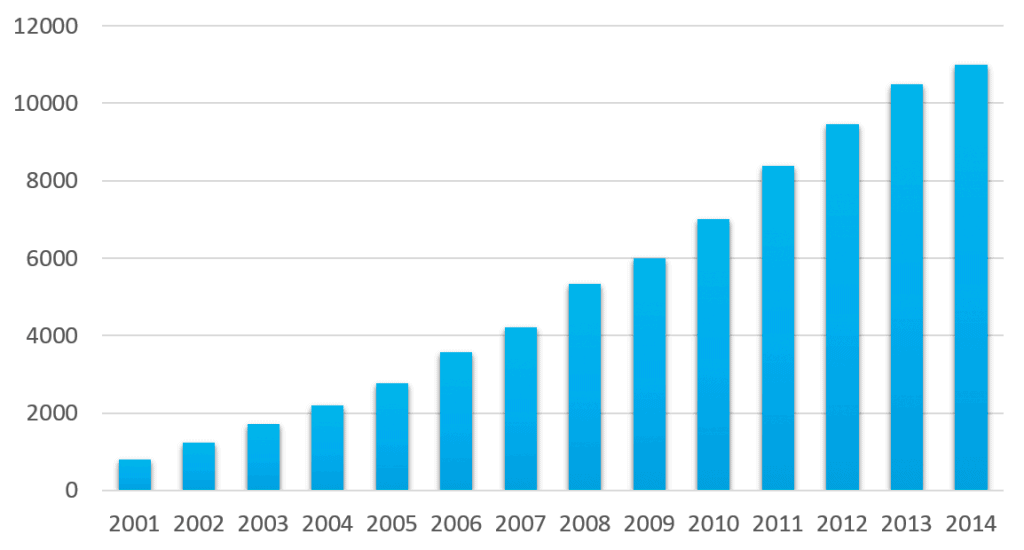Microfluidics: A powerful tool for biology research
You work in biology research and wonder how microfluidics can help you? Let’s discover together how microfluidics can benefit your research!
The microfluidic revolution: we take care of microfluidics, you focus on biology research!
10X more publications on microfluidics and biology research since 2002

A little bit of history: What is microfluidics?
Microfluidics emerged at the beginning of the 1980s and took advantage of microfabrication technologies used for transistors and microprocessors to handle small amounts of liquids inside micrometer to nanometer scale channels.
In the 2000s, technologies based on molding micro-channels in polymers such as PDMS (PolyDiMethilSiloxane) enabled fast development of microfluidics by allowing rapid prototyping in any research lab.
Today, microfluidics is a mature technology that provides efficient tools for multiple research areas, specifically biology research.
How microfluidics can enhance cell biology research?
Microfluidic systems are compatible with microscopy and conventional biology assays.
Applications: Cell culture, live cell imaging, 3D cell culture…
Its micrometer scale is the same as cells’ scale, enabling a fast medium switch.
Applications: Single-cell analysis, calcium imaging, drug response studies…
Microfluidics enable the finest flow control and stable concentration gradients.
Applications: Chemotaxis, shear stress assays, hydrodynamic cell trapping…
Microfluidics easily allows parallelization and thus promotes high throughput screening.
Applications: Drug screening, quantitative cell biology, bioinformatics…
Work with the world leader in microfluidic instrumentation
How can we help you to add microfluidics in your biology research?
Define your experiment
Our team of PhDs are available to discuss your project, understand your goals and assess your needs.
A setup fitted to your needs
Together, we will define the best setup according to both your experimental needs and your budget.
Setup installation in your lab
Our systems are plug & play and our team is available should you require assistance. We can install the setup in your lab and perform trial experiments with you.
Experiment with ease of mind
Our support team always answers within 24 hours if you have any questions about microfluidics and biology research.